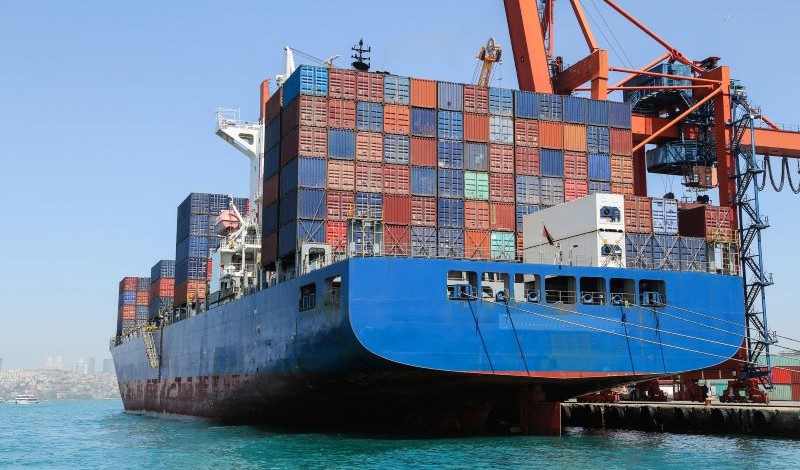
New regulations seek to restructure global supply chains to value long-term resilience over industrial efficiency.
The era of globalization created a world more connected than ever before through international financial and commercial activity. This recent era, however, also created a world underpinned by networks of container ships, cargo jets, freight trains, and sprawling warehouses that store and transport all of the stuff that people buy.
Over the past 50 years, production chains for both goods and services have become more complex and exported goods constitute an increasing share of global GDP. Although this trend is great for suppliers along the supply chain and the nations that benefit from global trade, it also requires supply chains that can meet the demands of consumers, businesses, and governments spread across the world.
Recent unforeseen events have put severe strains on the world’s supply chains, and new regulations in the United States and abroad are trying to restructure global supply chains to value resilience over efficiency.
For decades, the world has relied on global supply chains that were built to be lean, cheap, and efficient. But today, the logistics and supply chain industry is reconciling itself with a world in which suppliers must be ready for anything, including global pandemics, record-breaking inflation, and sudden geopolitical aggression.
For suppliers and their customers, investing in holistic supply chain resilience, however, might mean sacrificing some of the cost savings that came with supply chain efficiency.
Historically, supply chain managers have prioritized efficiency, and global networks have been constructed to get goods from point A to point B as efficiently as possible. This involves a substantial amount of interconnected activity, where with “just-in-time” delivery networks, the success of one supplier along the supply chain depends entirely on the success of the supplier that comes before it.
Just-in-time supply chains maximize efficiency by minimizing associated labor, capital, and storage costs. But if just one of the transporters along the way gets delayed or stopped, the entire journey becomes delayed and none of the transported goods will get to their final destinations on time. Alternatively, within resilient supply chain networks, suppliers carry extra inventory, use concurrent instead of sequential processes, and anticipate delays in delivery. Although this means that the supply chains will be more costly, they will also be less susceptible to risk and delays.
Because resilient supply chains are also important for government action, such as public health preparedness, military operations, and infrastructure development, regulators around the world are working to restructure global supply chains to incorporate practices that ensure resilience.
Supply chain resilience is defined as the ability of a given supply chain to prepare for and adapt quickly to disruptive changes. Resilient networks can bounce back easily, returning to the pre-disruption state quickly or even landing at a more desirable position. Since the COVID-19 pandemic, businesses, regulators, and international bodies have accepted the idea that supply chain resilience must be a priority in a world adapting to increasingly common supply chain stressors and unprecedented volumes of trade.
Since 2020, the Organization for Economic Co-operation and Development (OECD) has published an online resource detailing the policy tools that nations can use to achieve resilient supply chains. The OECD’s framework for achieving supply chain resilience is split into four key tenets: “anticipate risks,” “minimize exposure,” “open markets,” and “build trust.” For governments, the OECD prescribes action to build supply chain resilience through “efficient regulations, international cooperation, and regular reviews of risks and vulnerabilities.”
In terms of U.S. governmental action, in February 2021, President Joseph R. Biden issued an executive order aimed at promoting “resilient, diverse, and secure supply chains to ensure our economic prosperity and national security.” The executive order called for many actions to strengthen national supply chains, including enhanced coordination within the White House, a government-wide supply chain review, and supply chain assessments for particular economic sectors.
Previously, President Biden also signed an executive order to promote manufacturing in the United States. The order requires federal agencies to comply with the Buy American Act of 1933 by procuring goods, services, and materials from domestic suppliers whenever possible. According to the executive order, requiring the federal government to prioritize domestic suppliers within its own supply chain will “help American businesses compete in strategic industries and help America’s workers thrive.”
Together, these executive orders appear to be part of a larger effort by the Biden Administration to strengthen the resilience of domestic supply chains and benefit U.S. workers and suppliers in the process. Many executive agencies have now published plans detailing their approaches toward developing supply chain resilience across the United States.
In February 2022, the U.S. Department of Transportation announced $450 million in new funding for infrastructure upgrades at ports across the country. Later in 2022, the U.S. Department of Health & Human Services published its first Essential Medicines Supply Chain and Manufacturing Resilience Assessment. In addition, the U.S. Department of State announced last summer an 18-country partnership to assess and improve supply chain resilience around the world, outlining “transparency,” “diversification,” “security,” and “sustainability” as its key principles.
Until recently, supply chain networks have been a largely unseen aspect of the world economy. But they have always been a critical aspect of any country’s economy. Hospitals depend on supply chains to procure vaccines, military bases depend on them to transport equipment and inventory, and all businesses need them to source inputs efficiently.
Regulating global supply chains to value resilience over the long-term, instead of only to promote efficiency over the short-term, will likely be critical for sustaining the productivity of the global economy.



